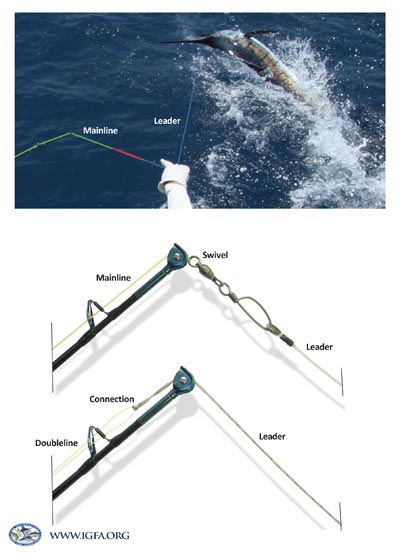IGFA Release Rules & Recommendations
Recreational anglers – whether weekend fishermen, world record hunters, or tournament competitors – are becoming increasingly conscious of the need to conserve the fish they love to pursue. As they call for more and better science to strengthen the health of fisheries the world over, they have also looked for ways to reduce the impact of their hobby on game fish species. In particular, more and more tournaments are adopting an all-release format, necessitating a standard for released catches. Answering this need, the International Game Fish Association has codified a new set of Release Rules to clarify and support the ideals of ethical recreational angling.
It is IGFA’s hope that establishing a definition for an “official IGFA release” will not only institute a standard by which anglers can compare releases, but also, and more importantly, encourage anglers to continue releasing fish. At its recent annual board meeting in January, the IGFA Board of Trustees approved the following:
IGFA will consider a fish officially released when one of the following actions is completed:
A. The mate is able to grab the leader
B. The swivel hits the rod tip
C. The connection (knot, splice, etc.) between the leader and the mainline/double line/ fly line passes through the rod tip

Leader lengths must conform to current IGFA tackle requirements. Specifically, for line up to and including 10 kg (20 lb) the leader may not exceed 15 feet. In lines over 10 kg (20 lb), the leader may not be in excess of 30 feet. All leader measurements are inclusive of the lure or hook arrangement and are measured to the bend of the last hook. IGFA tackle requirements for fly fishing do not stipulate a maximum overall length for fly leaders. However, since IGFA rules do not allow class tippets heavier than 10 kg (20 lb), IGFA will adopt the convention of allowing a maximum fly leader length of 15 feet in keeping in accordance with the regulations for conventional tackle. Fly leader length is inclusive of the fly and will be measured to the bend of the last hook. Shock tippets may not measure more than 12 inches (30.48 cm) in length and class tippets must be a minimum of 15 inches (38.10 cm) in length.
This new rule sets a standard for a released catch, and makes release formats more accessible for tournaments – many of which already use IGFA Rules as the basis for their tournament rules. “Anything we can do to promote the proper release of fish, especially in a tournament setting, is good,” IGFA President Rob Kramer said. “By establishing rules for what constitutes a release, the IGFA hopes to facilitate more fish making it back to the water alive and in the best possible health.”
While adopting this rules change, the IGFA Board of Trustees also saw the unique and beneficial opportunity to create a recommendation for best practices for safe and ethical release of fish:
Non-offset circle hooks are encouraged when fishing with live or dead natural bait The hook should be removed if possible and will not cause additional harm to angler or fish If the hook cannot be removed, the leader should be cut as close to hook as possible Mates should refrain from manually breaking or “popping” leaders because this can cause additional harm to fish, especially those not hooked in the jaw.
Ample time should be taken to revive exhausted fish by gently moving them forward in the water to get water flowing over the gills. Knotless, rubber coated nets should be used on fish that are netted. “Anglers have realized that in order for our sport to thrive, we must each take responsibly for being good stewards of our resources,” Kramer added. “The IGFA is proud to be taking a progressive part in that effort with these changes and recommendations.”

Houhora Big Game & Sport Fishing
New Zealand's Most Northern Fishing Club
Location
4046 Far North Road, Pukenui
Email: admin@houhorafishingclub.co.nz
https://www.facebook.com/onebasenz
Sand Bar Restautant Enquiries Phone:
094097755
 Admin Login
Admin Login